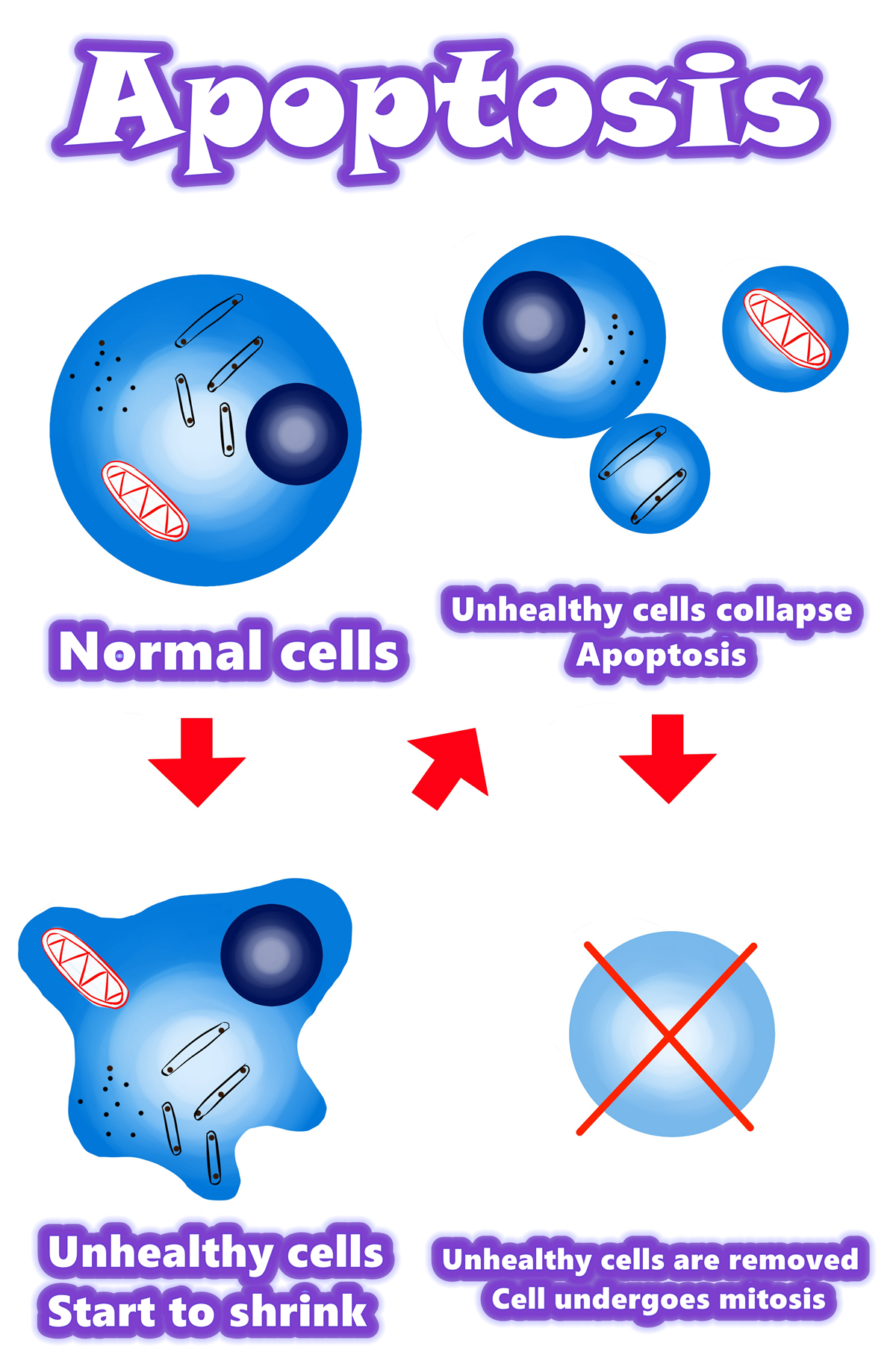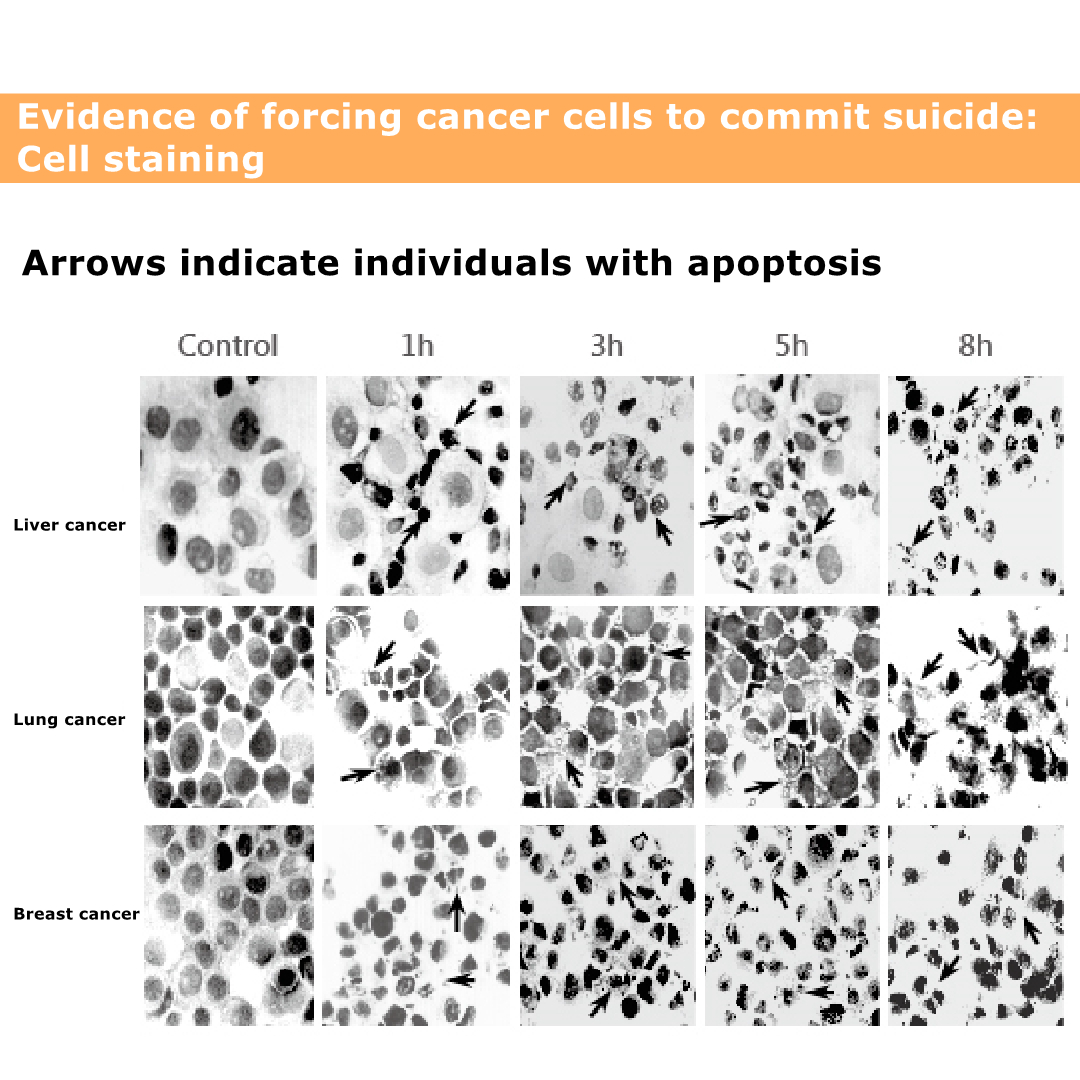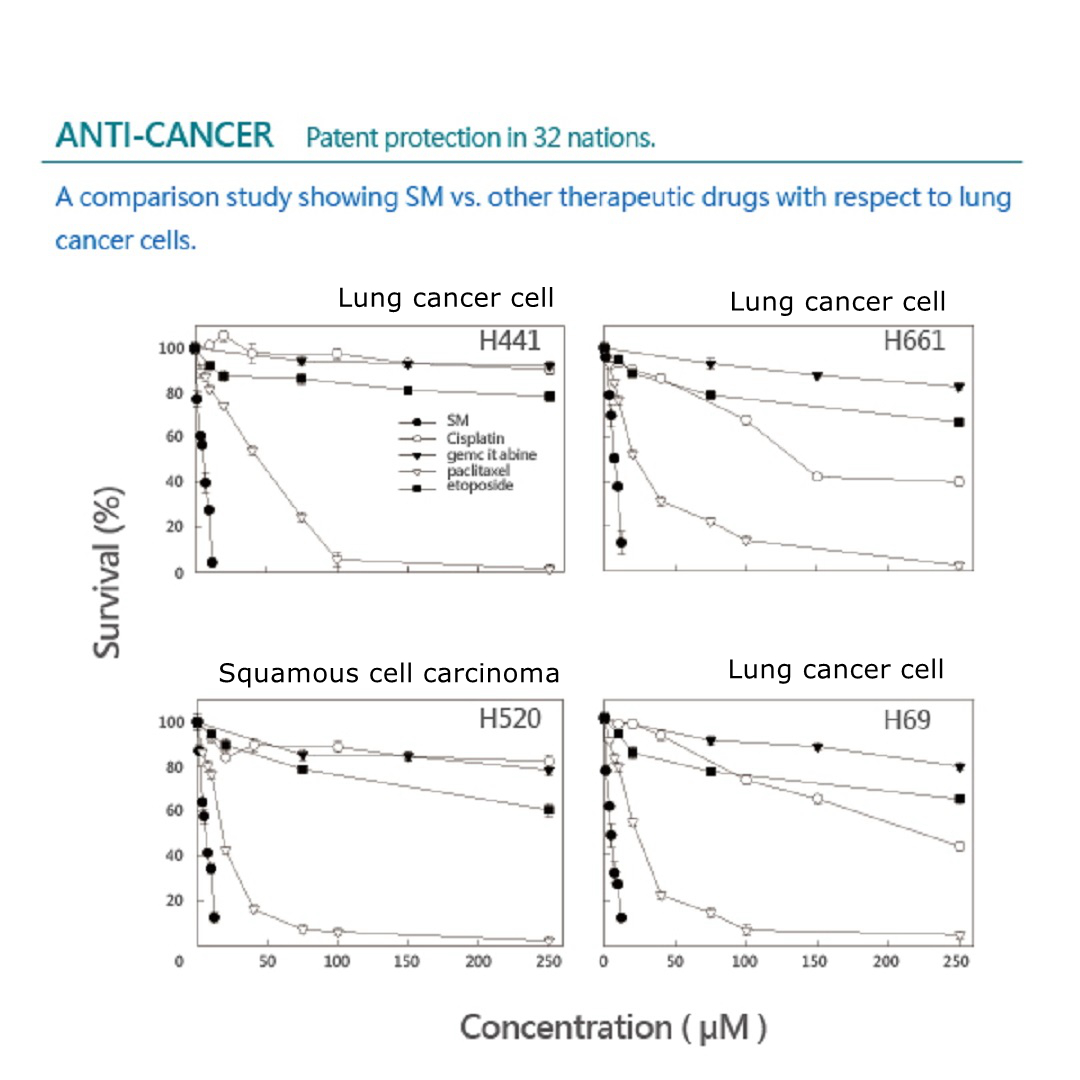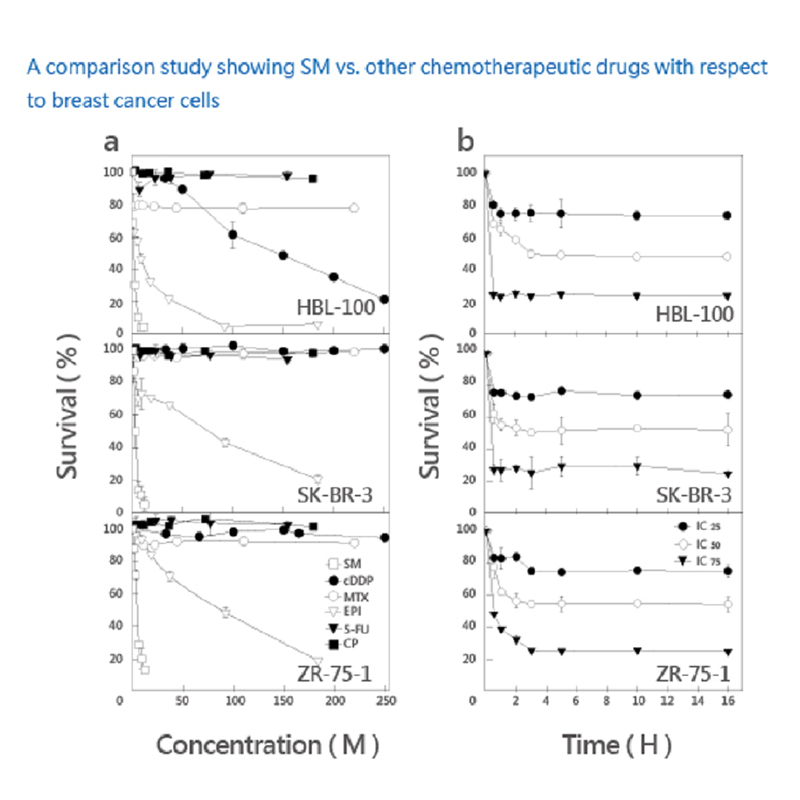
Best adjuvant (assist) for chemotherapy | 1+1>487% |
Effectively improve chemotherapy effect, treatment, immunity.
Reduce side effects and recurrence.
Overview / Relation / Abstract / Role / Principle / Action / Mechanism / Function / Work |
Eye Melanoma: Latest Research
Abstract / Summary / Overview of Apoptosis.
Why do cells undergo apoptosis?
The relationship between cancer cells and apoptosis.
Where are the weaknesses and symptoms of cancer cells?
Are cancer cells aggressive?
Extraordinary Solamargine (Role, Principle, Action, Mechanism, Function, Work)
Solamargine's major function mechanism:
Solamargine vs cancer
Best Chemotherapy Adjuvant. (1+1>478%)
Effectively improve chemotherapy effect and cure.
When cancer cells are less resistant to drugs, chemotherapy becomes more effective.
Extract : https://www.cancer.net/cancer-types/
Eye Melanoma: Latest Research
You will read about the scientific research being done to learn more about eye melanoma and how to treat it.
Doctors are working to learn more about eye melanoma, ways to prevent it, how to best treat it, and how to provide the best care to people diagnosed with this disease. The following areas of research may include new options for patients through clinical trials. Always talk with your doctor about the best diagnostic and treatment options for you.
Targeted therapy. Researchers are studying the genes, proteins, and other factors that may be involved in the development of eye melanoma. Targeted therapy is a treatment that targets the cancer’s specific genes, proteins, or the tissue environment that contributes to cancer growth and survival. Recent studies show that not all tumors have the same genes or proteins. Many research studies are taking place now to find out more about specific molecular features and develop new adjuvant and metastatic treatments for uveal and conjunctival melanoma.
About 80% of uveal melanomas are associated with GNAQ or GNA11 gene mutations. A mutation is a change in the gene. MEK inhibitors are a type of targeted therapy being researched as a treatment for tumors with these mutations. Researchers also continue to study targeted therapies for gene mutations associated with conjunctival melanoma, including a mutation in the BRAF gene. This mutation appears in 30% to 50% all primary and metastatic conjunctival tumors.
Learn more about the basics of targeted treatment.
Immunotherapy. Researchers are studying immunotherapy drugs alone, in combination with each other, and in combination with other drugs or therapies to find ways to prevent or treat uveal melanoma metastasis.
Monoclonal antibodies, which specifically target and destroy cancer cells, are a type of immunotherapy being tested in clinical trials. For example, a combination of ipilimumab (Yervoy) and nivolumab (Opdivo) is being studied as an adjuvant therapy to prevent metastasis after the first treatment for uveal melanoma. Learn more about the basics of immunotherapy.
Chemotherapy. Chemotherapy is the use of drugs to destroy cancer cells. It usually works by keeping the cancer cells from growing, dividing, and making more cells. Systemic chemotherapy gets into the bloodstream to reach cancer cells throughout the body. For people with metastatic uveal melanoma, adjuvant chemotherapy treatment is being tested in clinical trials. Topical chemotherapy drugs, such as 5-fluorouracil (5-FU), bortezomib (Velcade), sorafenib (Nexavar), and others, are being studied as adjuvant therapy for conjunctival melanoma. Learn more about the basics of chemotherapy.
Improved radiation therapy. Many hospitals and cancer centers offer methods that focus radiation therapy to the tumor to help reduce damage to the rest of the eye. Researchers continue to investigate ways to make radiation therapy more effective for eye melanoma and to reduce side effects from the treatment. Some studies are looking at how radiation therapy works in combination with immunotherapy or other drugs.
Advances in surgery. Researchers are looking to see if sentinel lymph node biopsy can find microscopic lymph node disease in people with conjunctival melanoma before it becomes obvious. With this surgical technique, researchers could potentially identify metastatic disease that would otherwise go unnoticed until it is advanced.
Treating liver metastases. Because eye melanoma commonly metastasizes to the liver, many people need treatment to the liver. For instance, a clinical trial for metastatic eye melanoma is testing a technique called percutaneous hepatic perfusion (PHP) with the chemotherapy drug melphalan (Alkeran). This technique sends high doses of the chemotherapy directly into the liver.
Palliative care/supportive care. Clinical trials are underway to find better ways of reducing symptoms and side effects of current eye melanoma treatments to improve comfort and quality of life for patients.
Abstract / Summary / Overview of Apoptosis.

Overview of apoptosis
•Programmed cell death
•Apoptosis is a form of programmed cell death, or “cellular suicide.”
•Apoptosis is different from necrosis, in which cells die due to injury.
•Apoptosis removes cells during development, eliminates potentially cancerous and virus-infected cells, and maintains balance in the body.
Why do cells undergo apoptosis?
- Basically, apoptosis is a general and convenient way to remove cells that should no longer be part of the organism.
- Some cells are abnormal and could hurt the rest of the organism if they survive, such as cells with viral infections or DNA damage.
- Apoptosis is part of development
- In many organisms, programmed cell death is a normal part of development.
The relationship between cancer cells and apoptosis
Apoptosis can eliminate infected or cancerous cells.
When a cell’s DNA is damaged, it will typically detect the damage and try to repair it.
If the damage is beyond repair, the cell will normally send itself into apoptosis, ensuring that it will not pass on its damaged DNA.
When cells have DNA damage but fail to undergo apoptosis, they may be on the road to cancer.
However, “successful” cancer cells successfully evade the process of apoptosis.
This allows them to divide out of control and accumulate mutations (changes in their DNA).
Apoptosis is key to immune function
Apoptosis also plays an essential role in the development and maintenance of a healthy immune system.
Where are the weaknesses and symptoms of cancer cells?
The symptoms of cancer cells are in the nucleus.
The nucleus controls the outer cytoplasm, cell composition, cell viability, etc.
DNA mutations also mutate in the nucleus.
Therefore, to treat cancer cells, we must first enter the nucleus.
Let the “regulatory cell gene” mechanism enter the nucleus to regulate
Are cancer cells aggressive?
After the action of Solamargine, the aggressiveness of cancer cells is alleviated.
So after using Solamargine, many patients feel that I am half better.
Although the tumor does not disappear quickly, patients feel that the degree of aggressiveness is reduced.
Extraordinary Solamargine (Role, Principle, Action, Mechanism, Function, Work).

Solamargine's major function mechanism:
When Solamargine enter,
Solamargine activates receptors that are turned off by cancer cells, allowing cancer cells to modulate again.
Solamargine modulates the anti-modulates genes of cancer cells, making cancer cells less resistant.
Reduced drug resistance
When cancer cells are less resistant to drugs, chemotherapy becomes more effective.
Solamargine modulates the mutated genes in cancer cells and then initiates cancer cell apoptosis to achieve anti-cancer effects.
Solamargine combined with which chemotherapy drugs are more effective in treating cancer cells?

Solamargine vs cancer

Solamargine vs cancer
The picture shows the death of cancer cells.
The black and black parts are cancer cell nuclei.
Even if the nucleus ruptures, the cancer cells will die.
The figure shows that cancer cells can cause death.

The figure shows that cancer cells can cause death.
The figure shows that the death of lung cancer cells is relatively slow, and it will not be obvious until eight hours later.
The figure shows that the death of liver cancer cells is very obvious, even more obvious in eight hours.
The graph shows that breast cancer cells die faster. It was obvious from the beginning that breast cancer is easy to treat, and patients with breast cancer need not worry.
Best Chemotherapy Adjuvant. (1+1>487%)
Effectively improve chemotherapy effect and treatment.
ANTI-CANCER
Patent protection in 32 nations.
A comparison study showing Solamargine vs. other therapeutic drugs with respect to lung cancer cells.
 A comparison study showing Solamargine vs. other chemotherapeutic drugs with respect to breast cancer cells.
A comparison study showing Solamargine vs. other chemotherapeutic drugs with respect to breast cancer cells.

SR-T100 combination therapy with effective result against breast cancer cells.

Combination Therapy | Research results for lung cancer cells.
A. Chemotherapy (100μM), 16% of cancer cell apoptosis.
B. Alone SM (4.8μM), 28% of cancer cell apoptosis.
C. SM (4.80μM) + Chemotherapy (40μM), 66% of cancer cells apoptosis.
D. SM (4.80μM) + Chemotherapy (100μM), 78% of cancer cell apoptosis.
SM has a clearing effect better than Chemotherapy.
The combined treatment of Solamargine and Chemotherapy significantly increased the apoptosis of lung cancer cells.
SM (4.8μM) + Chemotherapy (40μM), increased from 16% to 66% (up to 4.125 times).
SM (4.8μM) + Chemotherapy (100μM), increased from 16% to 78% (up to 4.875 times).
Reorganized from: BBRC. Action of Solamargine on TNFs and drug-resistant human lung cancer cells 2004.
The best solution for cancer cells.
